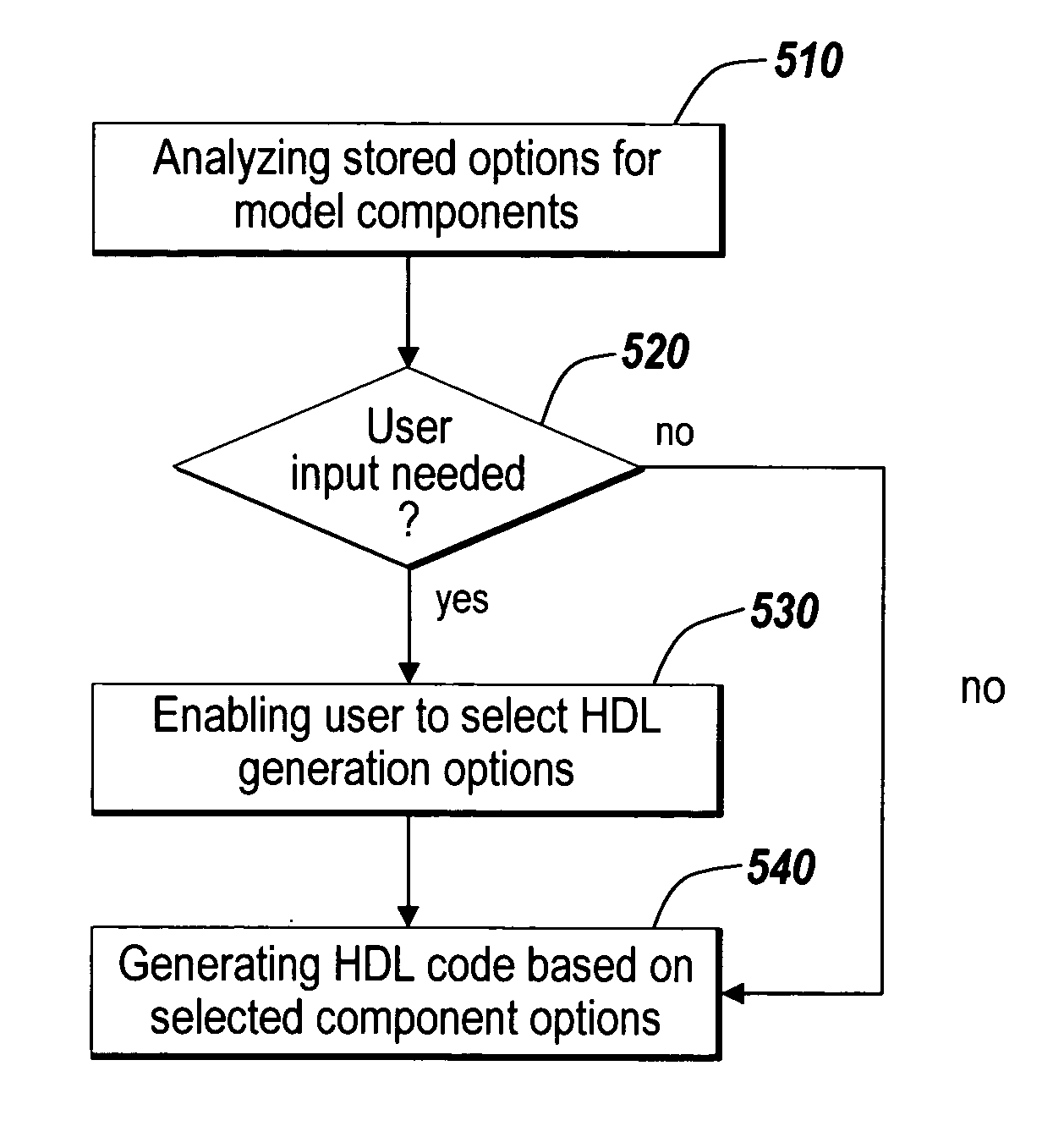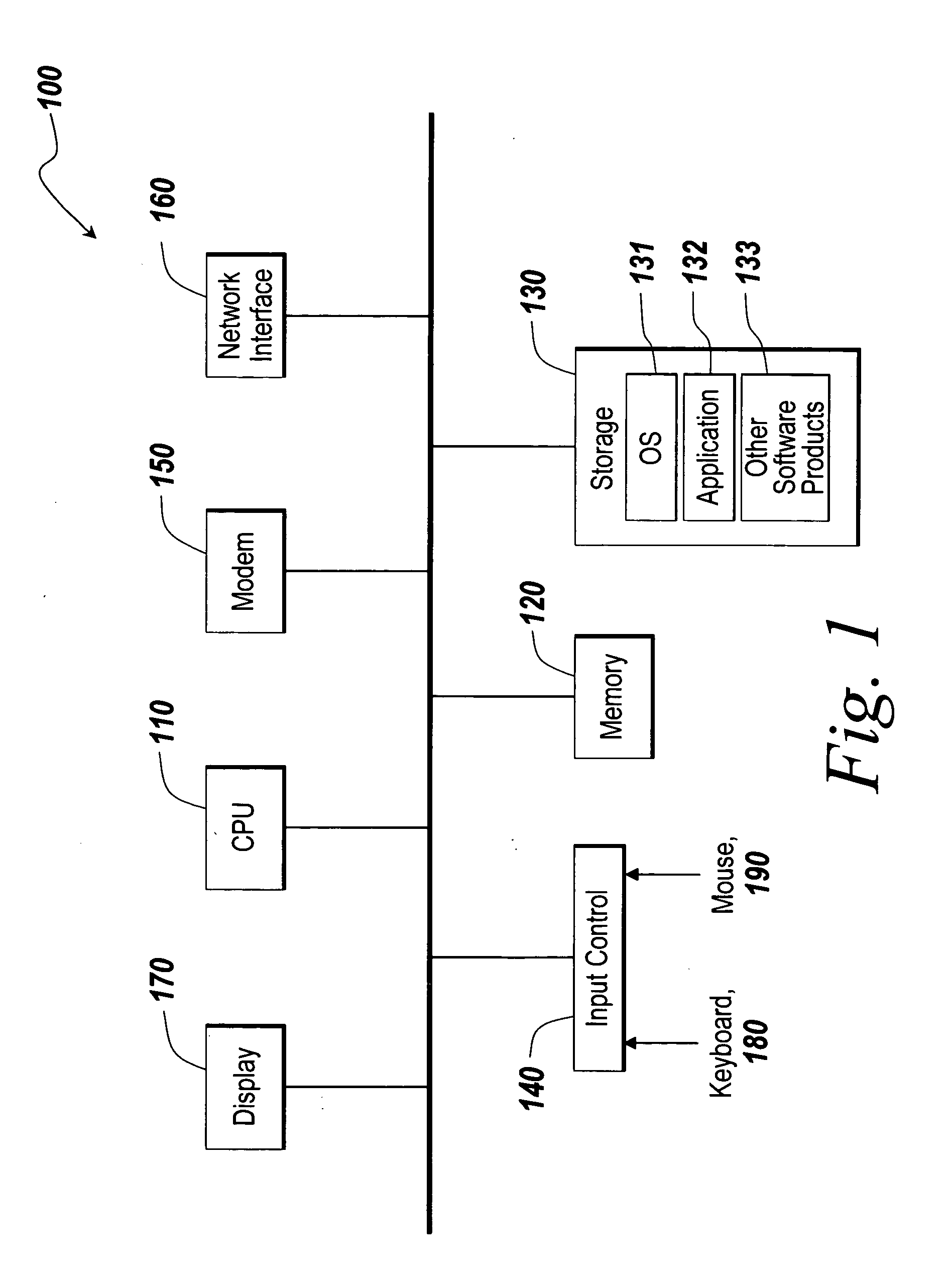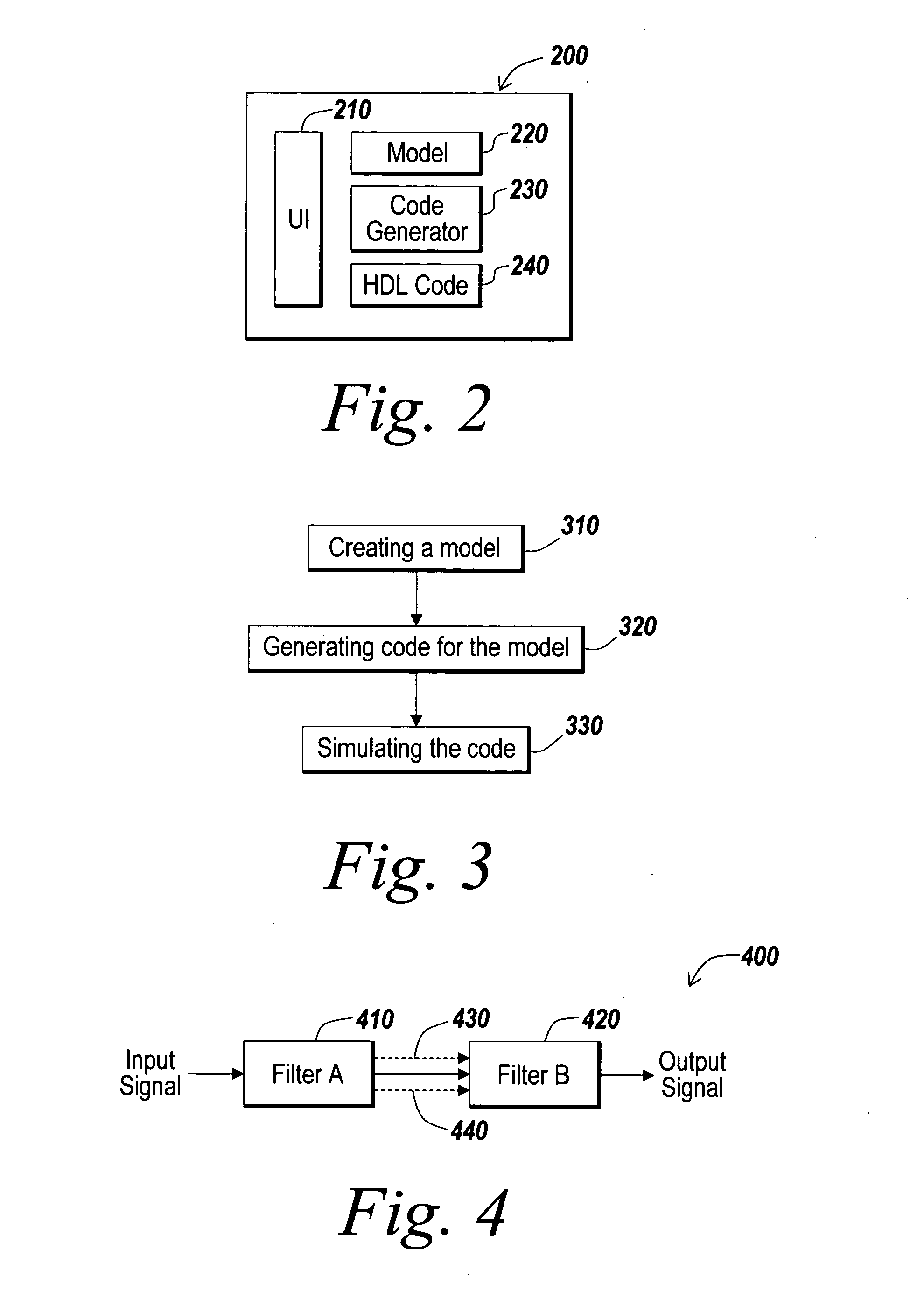Hardware definition language generation for frame-based processing
a technology of frame-based processing and definition language, which is applied in the direction of instrumentation, program control, cad circuit design, etc., can solve the problems of not being so easily parallelizable and the size of target hardware, and achieve the effect of being easily parallelizable and parallelizabl
- Summary
- Abstract
- Description
- Claims
- Application Information
AI Technical Summary
Benefits of technology
Problems solved by technology
Method used
Image
Examples
Embodiment Construction
[0028]The illustrative embodiment of the present invention provides for automatic code generation from a model containing one or more blocks adapted for frame-based processing. The illustrative embodiment automatically generates code for the hardware description of the model, including the blocks adapted for frame-based processing. The hardware description may be generated in a Hardware Description Language (HDL), such as a very high speed integrated circuit hardware description language (VHDL), Verilog, and other similar languages. Although the illustrative embodiment is described herein relative to HDL code, one of skill in the art will appreciate that the hardware description may be generated in other languages, including programming languages, such as C++, C, C#, SystemC, Java and Javascript. Similarly, although the illustrative embodiment is directed to generating hardware description language code from Simulink® and / or MATLAB® models, one of skill in the art will appreciate th...
PUM
 Login to View More
Login to View More Abstract
Description
Claims
Application Information
 Login to View More
Login to View More - R&D
- Intellectual Property
- Life Sciences
- Materials
- Tech Scout
- Unparalleled Data Quality
- Higher Quality Content
- 60% Fewer Hallucinations
Browse by: Latest US Patents, China's latest patents, Technical Efficacy Thesaurus, Application Domain, Technology Topic, Popular Technical Reports.
© 2025 PatSnap. All rights reserved.Legal|Privacy policy|Modern Slavery Act Transparency Statement|Sitemap|About US| Contact US: help@patsnap.com



